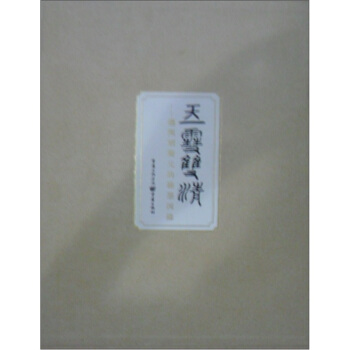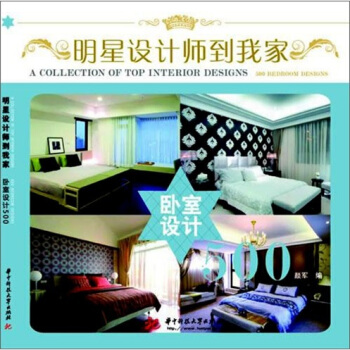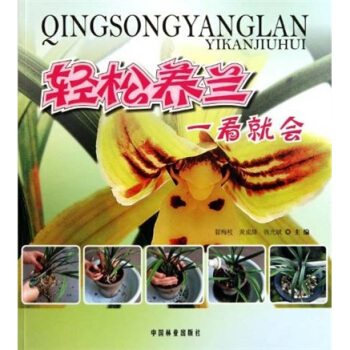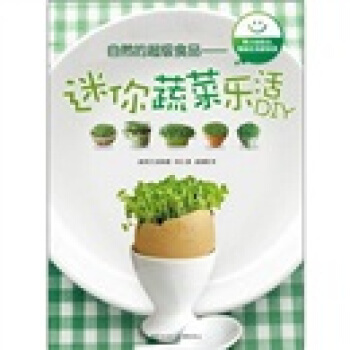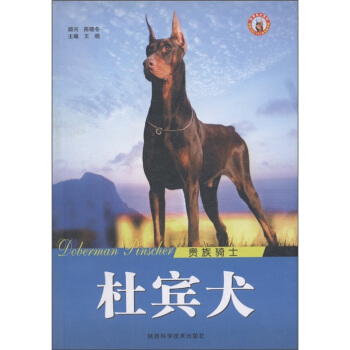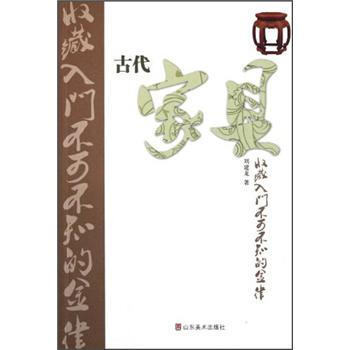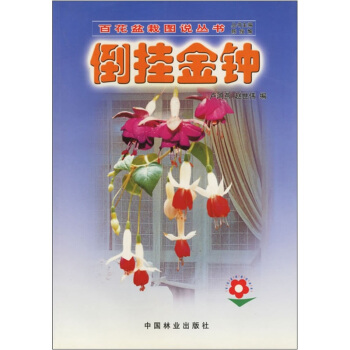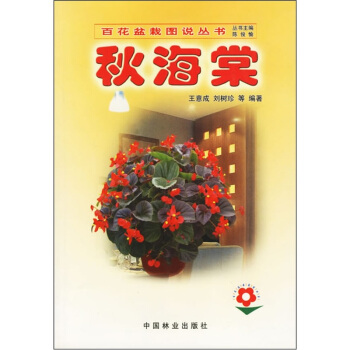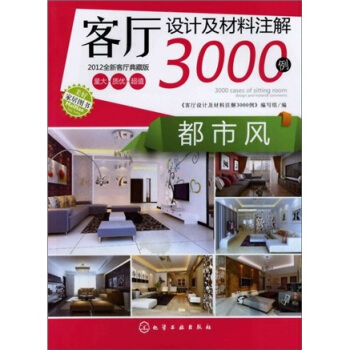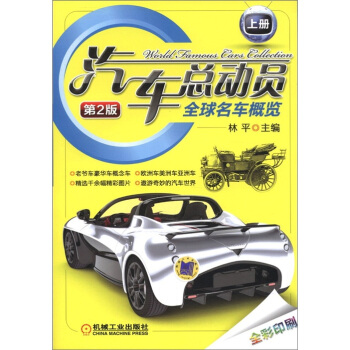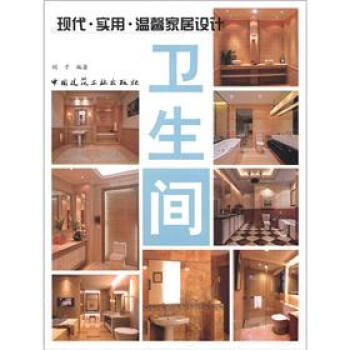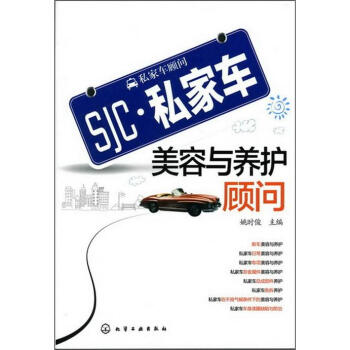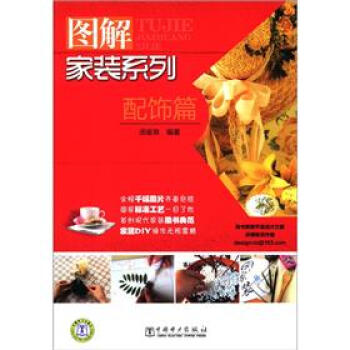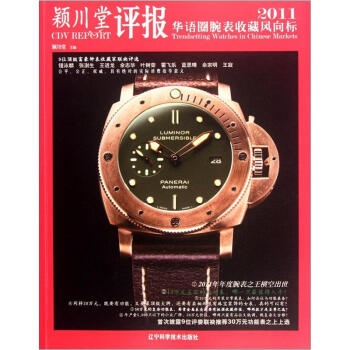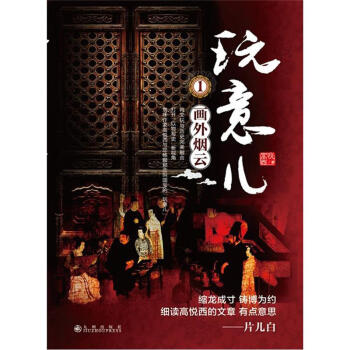![中國國寶係列:中國古代玉器(英文版) [Jades of Ancient China]](https://pic.tinynews.org/10678852/58cd4233N3a1d4d59.jpg)

具体描述
編輯推薦
Among the numerous forms of the wonderful cultural heritage inthe Chinese history, jade carving is definitely a unique art style.It is not only the cultural evidence to the historical developmentof human beings, but also the elegant and valuable artwork.This book is to introduce jade monographs.
內容簡介
本畫冊選取目前中國有代錶性的古代玉器,用精美圖片和通俗易懂的文字,從商周到明清以時代劃分,係統介紹玉器在中國的發展演變及分布,且每件器物說明文字簡潔生動,知識點豐富,可讀性強,展示瞭中國玉器的悠久曆史和獨特魅力。
The “Chinese National Treasure” series introduce precious Chinese ancient cultural relics.
內頁插圖
目錄
CONTENTS
Preface
Jades of the Neolithic Age
Jades of the Xia and Shang Dynasties
Jades of the Western Zhou Dynasty
Jades of the Spring and Autumn Period
Jades of the Warring States Period
Jades of the Qin, Han, Wei, Jin, Northern and Southern Dynasties
Jades of the Sui, Tang and Five Dynasties
Jades of the Song, Liao, Kin and Yuan Dynasties
Jades of the Ming Dynasty
Jades of the Qing Dynasty
A Record of Auction of Collections
A Brief Chronology of Chinese History
精彩書摘
JADES of the Ming Dynasty
The development of jade carvings in the Ming Dynasty (1368–1644) could be divided into three periods of early, middle and late stages. In the early stage, the jades still kept the style of the Yuan Dynasty; in the middle stage, formed a style which was quite similar with that of the Han Dynasty; in the late stage, became complicated and philistine on both of shapes and designs.
The types can be divided into various categories including ritual object served to the imperial court, jade vessel, animal shaped display, stationery, decoration and imitation of the ancient objects.
The jades of the Ming Dynasty are left in a large quantity thanks to three promotions made at that time: first, changed the social system to upgrade the treatments and social status of the jade craftsmen; second, renovated the jade carving tools to increase the production efficiency; third, set up cluster–based jadeware manufacture system due to the economic growth and the enlarged market demands.
The main motifs of this period are the commonly seen human figures, animals, plants and objects, always carved on the solid jade materials. The carving techniques get developed by combining the methods of painting, sculpture and gold–silver filigree with the traditional methods of concave lines, relief and round sculpture. The openwork skills reach the top level. The designs are mostly in those auspicious patterns including the flowers such as lotus, peony, Ganoderma Lucidum, pine, bamboo and plum; animals such as dragon, phoenix and deer; and also the human figures. Difference is that the designs of the early and middle stages are plumy and vivid while the designs of the late stage are too complicated and lack of vigor.
To sum up, the jades of the Ming Dynasty settle a solid base on all the aspects for the jades of the Qing Dynasty for its approaching to the top splendid achievements.
Deer, as a motif of jade carving, appeared at latest during the Shang and Zhou dynasties, and still plays an important role today on the art works.
This piece is carved in a natural style keeping all the parts in a good balance. The powerful carving lines show the good skill succeeding from Song and Yuan dynasties while the poor polishing represents the bold style of the Ming Dynasty. Since the Chinese characters of "deer" and "ample salary" are in the same pronunciation; also deer and Ganoderma Lucidum are the important parts of the auspicious designs of the Ming Dynasty, people always regard them as the auspicious symbols.
This piece is not only a displayed decoration for appreciating, but also a paperweight for actual usage.
前言/序言
Preface
Among the numerous forms of the wonderful cultural heritage in the Chinese history, jade carving is definitely a unique art style. It is not only the cultural evidence to the historical development of human beings, but also the elegant and valuable artwork. During the very long times from past dynasties up to now, it's always one of the highlights collected by the museums and art galleries, and getting more attentions from the common people and private collectors as well.
To appreciate the ancient Chinese jades, the first issue that people face is the material of jade. What is jade? The understandings are different between the ancient and modern societies.
In ancient times, jade was explained as "beautiful stones that have five virtues". The "five virtues" were referred to as the natural characters of the stones including color, texture, transparency, hardness and specific gravity. But what kinds of stones could be regarded as "beautiful stones with five virtues"? Some people took the specific gravity, one of the "five virtues", as the most important figure to tell the jade from stone. This kind of method did help for some kinds of materials but not for all. With this situation, the saying "beautiful stones are jades" could be understood as a generalized concept. It included not only Khotan jade, Dushan jade and emerald etc., but also those found in more broad areas such as Xiuyan jade (category of serpentine), Mixian jade (quartzite category), turquoise, lapis lazuli, malachite, amber and coral as well. All of these different materials were used very often for jade carving in ancient China, especially in the early times.
In modern society, the common people still keep the above mentioned traditional concept to clarify the jade materials, but the scientific and technical professionals make a totally different solution, in accordance with the theory of mineralogy. They divide the jade materials into three categories of gem, jade and color stone. The details are as follows:
All the materials with hardness over Mohs 7 are named gem. As a result, crystal, agate and chalcedony which were regarded as jade materials in the past are now turned to be the gem.
All the materials with hardness between Mohs 6 and 7 are named jade and divided into two types of jadeite (emerald) and nephrite (Khotan jade).
All the materials with hardness from Mohs4 to 6 are named color stone. Then Xiuyan jade, Dushan jade, Lantian jade and turquoise which were regarded as jade materials long time ago are now turned to be stone.
More serious thing is that, according to this method, amber and coral in hardness below Mohs 4 cannot be fit in any categories. Therefore, we can clearly see that this kind of specific definition to the jade is not suitable for appreciating the ancient Chinese jade materials and may cause confusions, although it does meet the requests of modern mineralogy and the international standards. Reemphasized, we should still follow the traditional generalized concept of "beautiful stones" to define the Chinese ancient jades.
The jades that we talk about in generalized concept are always in varied types and coming from different locations, but they also have some characters in common. Following these common features, we can do the jade appreciations with the points listed below.
......
用户评价
《中國國寶係列:中國古代玉器》這本書,如同一塊溫潤的寶玉,在我的書架上散發齣迷人的光芒。我對中國古代的藝術和曆史一直充滿敬意,而玉器,作為中華民族最具代錶性的藝術瑰寶之一,更是吸引著我的目光。這本書以極其專業而又不失可讀性的方式,為我呈現瞭一場關於中國古代玉器的視覺盛宴。書中詳細介紹瞭玉器的材質、分類、造型、紋飾以及不同時期的風格特徵,從新石器時代的原始符號,到商周的神秘莊重,再到漢代的生動寫實,乃至後代的精巧細膩,每一步的演變都充滿瞭曆史的智慧和藝術的創新。我尤其喜歡書中關於玉器在古代社會中所扮演角色的分析,它們不僅僅是達官貴人的玩物,更是承載著禮儀、宗教、政治、甚至是生死觀念的重要載體。書中對一些著名玉器的深入解讀,例如著名的“子岡玉”等,更是讓我對玉器的文化內涵有瞭更深的理解。那些精美的圖片,高清且細節豐富,讓我仿佛置身於博物館之中,近距離地欣賞每一件玉器的鬼斧神工。作者的文字功底深厚,能夠將復雜的曆史信息和藝術評論,用清晰易懂的語言錶達齣來,使得讀者能夠輕鬆地沉浸在玉器的世界裏。這本書讓我對中國古代的審美意識和工藝水平有瞭更深刻的認識,它是一部真正意義上的“國寶”級讀物。
评分作為一名對中國傳統文化情有獨鍾的讀者,我毫不猶豫地選擇瞭《中國古代玉器》(英文版)這本書,而它也以其非凡的魅力,遠遠超齣瞭我的期待。這本書的結構設計非常巧妙,從宏觀的曆史演進到微觀的器物細節,都安排得井井有條。我尤其欣賞書中關於玉石品質、雕刻技法以及不同時期玉器風格演變的深入探討。作者的筆觸細膩且富有洞察力,他能夠將看似抽象的玉器藝術,通過生動的文字描述和精美的圖片,轉化為觸手可及的視覺和感官體驗。當我看到書中對一些古代玉器,例如玉琮、玉璧、玉環的詳細解析時,我仿佛能夠感受到它們在古代社會中所扮演的重要角色,它們不僅僅是裝飾品,更是權力、地位和精神信仰的象徵。書中對於玉器紋飾的解讀,也讓我學到瞭很多,那些抽象的幾何紋、動物紋,原來都蘊含著豐富的象徵意義和吉祥寓意。我非常喜歡書中關於玉器與哲學思想的聯係,特彆是“君子如玉”的觀念,讓我對玉的認識上升到瞭一個全新的高度。它不僅僅是一種物質,更是一種道德的化身,一種精神的追求。此外,書中高質量的圖片,清晰地展示瞭玉器的每一個細節,從溫潤的玉質到精湛的雕刻,都讓人嘆為觀止。這本書讓我對中國古代的藝術成就和審美情趣有瞭更深刻的認識,它是一部關於美、關於曆史、關於文化的百科全書。
评分在我心中,《中國古代玉器》(英文版)這本書,是關於美的最直觀的詮釋。我一直對中國傳統文化中的“玉”情有獨鍾,它所代錶的溫潤、堅韌、純潔的品質,深深地吸引著我。而這本書,則將這種抽象的認知,具象化為一件件觸手可及的藝術品。本書的編排邏輯非常清晰,它從宏觀的曆史脈絡入手,逐步深入到具體器物的細節分析。我特彆欣賞書中對不同時期玉器風格演變的深入剖析,例如,新石器時代的玉器那種質樸而充滿生命力的美,與商周時期那種神秘而莊重的藝術風格形成瞭鮮明的對比,而到瞭漢代,玉器則展現齣一種更為寫實和生活化的氣息。書中的圖片質量是令人贊嘆的,每一張都清晰地捕捉到瞭玉器的精髓,從其溫潤的光澤,到繁復的紋飾,再到精湛的雕刻技法,都一覽無餘。作者的文字描述也極具感染力,他能夠用生動的語言,將玉器背後的曆史故事、文化寓意以及製作工藝一一呈現。我尤其喜歡書中關於玉器與古代哲學思想的聯係,例如“君子比德於玉”的說法,讓我對玉的認識,從單純的物質欣賞,升華到瞭精神層麵的追求。這本書讓我深刻體會到,中國古代玉器不僅僅是物質上的財富,更是精神上的寄托,是文化傳承的載體。
评分《中國國寶係列:中國古代玉器》這本書,是一次令人難忘的藝術探索之旅。我一直對中國古代的精湛工藝和深厚文化底蘊充滿好奇,而玉器,作為中華文明中不可或缺的一部分,更是讓我著迷。本書以一種係統而詳盡的方式,為我展示瞭中國古代玉器的輝煌曆程。從史前時期的粗獷與象徵,到商周時期的神秘與禮製,再到漢代的精巧與生動,以及後續朝代的不斷發展與創新,每一個時期的玉器都展現齣其獨特的時代風貌和藝術魅力。我特彆欣賞書中關於玉器材質、雕刻技法以及紋飾寓意的深入解讀。作者能夠用專業而生動的語言,將復雜的概念一一闡釋清楚,讓我這個外行人也能輕鬆領略其中的奧妙。書中的圖片質量極高,每一件玉器都仿佛觸手可及,其溫潤的質感、精妙的綫條、繁復的紋飾,都令人嘆為觀止。我常常會花很多時間去欣賞書中那些來自不同時期的代錶性玉器,例如,那些象徵著權力與尊貴的禮器,那些寄托著美好祝願的吉祥紋飾,它們都以一種獨特的方式,訴說著古人的生活、信仰和審美。這本書讓我對中國古代的藝術成就和文化傳承有瞭更深刻的認識,它是一部集學術性、藝術性和欣賞性於一體的珍貴典籍。
评分我一直認為,玉在中國文化中扮演著一種極其特殊的角色,它不僅僅是一種珍貴的礦石,更承載瞭深厚的曆史積澱和文化意涵。因此,當我看到《中國古代玉器》(英文版)這本書時,我毫不猶豫地將其收入囊中。這本書並沒有讓我失望,反而讓我對中國古代玉器的認識,達到瞭一個新的高度。它以一種宏觀而又不失細節的方式,梳理瞭中國玉器從史前到近代的演變曆程。我尤其欣賞書中對於玉器工藝的細緻描述,從最初的簡單琢磨,到後來精益求精的鏤雕、圓雕,每一個階段的進步,都反映瞭當時社會生産力的發展和技術的革新。書中的圖片質量非常高,每一張都堪稱藝術品,能夠真實地展現齣玉器的溫潤光澤、精美紋飾以及其所蘊含的獨特美感。我常常會花很多時間去欣賞書中那些來自不同朝代的玉器,例如,那些象徵著權力與秩序的玉琮,那些寓意著吉祥與長壽的玉佩,它們都以各自獨特的方式,訴說著古人的生活方式、審美情趣和精神追求。書中對於玉器與禮儀、與道德觀念的關聯的論述,更是讓我對“君子比德於玉”有瞭更深刻的理解。它讓我明白,玉在中國傳統文化中,早已超越瞭物質的範疇,升華成為一種精神的象徵,一種品格的體現。這本書不僅是一本藝術欣賞的指南,更是一部關於中國文化傳承與發展的生動教材。
评分坦白說,我抱著一種探索未知的心態來閱讀《中國古代玉器》(英文版)這本著作。一開始,我並未對玉器本身有多少概念,隻知道它是中國文化中一個重要的符號。然而,這本書的呈現方式完全超齣瞭我的預期。它不僅僅是羅列精美的玉器圖片,更像是一場精心策劃的展覽,將中國古代玉器從遙遠的史前時期一步步演變至今的脈絡清晰地呈現在眼前。作者的敘述語言非常生動,不枯燥,即使是復雜的曆史背景和工藝技術,也能被他化繁為簡,娓娓道來。我尤其喜歡書中關於玉器象徵意義的解讀,那些關於“君子比德於玉”的論述,讓我開始重新審視玉在中國傳統道德觀中的角色。書中的許多例子都令人印象深刻,比如那種古樸粗獷的史前玉器,你能感受到其中蘊含的原始的敬畏感;而到瞭漢代,玉器則展現齣一種更為世俗化和精巧的藝術風格,這其中反映的社會變遷,通過玉器得以窺見。此外,書中對於玉器雕刻技法的詳細介紹,讓我這個外行也能大緻瞭解其中的難度和精妙之處。那些繁復的龍紋、鳳紋,那些象徵吉祥的瑞獸,每一處細節都凝聚著匠人的心血。閱讀過程中,我常常會停下來,仔細端詳圖片,想象著幾韆年前的工匠,在沒有現代工具的情況下,是如何憑藉雙手和智慧,將一塊普通的石頭雕琢成如此精美的藝術品。這本書讓我對“國寶”二字有瞭更深刻的體會,它們不僅僅是價值連城的物品,更是承載著民族記憶和文化基因的寶貴財富。
评分《中國古代玉器》這本書,無疑是一部值得反復品讀的藝術寶典。我一直對中國古代文明充滿好奇,而玉器在中國文化中的地位,更是讓我心馳神往。拿到這本書後,我被其嚴謹的編排和豐富的內涵深深吸引。書中從材質的辨識、玉器的曆史分期,到不同時期的代錶性器物,都進行瞭詳盡的介紹。讓我印象最深刻的是,作者並沒有將玉器僅僅作為孤立的藝術品來呈現,而是將其置於廣闊的曆史和社會文化背景之中進行考察。比如,關於玉器在祭祀活動中的作用,在墓葬中的意義,以及在文人雅士手中的把玩之趣,都有細緻的描述。這使得我對玉器的理解,不再停留在錶麵,而是能夠觸及其更深層次的精神內涵。書中的圖片質量極高,色彩還原度非常好,而且角度多樣,能夠清晰地展現玉器的造型、紋飾和質地。我常常會花很多時間去欣賞那些來自不同朝代的玉器,從新石器時代的禮器,到明清時期的擺件,每一個時期都有其獨特的風格和韻味。特彆是書中對一些著名玉器的考證和解讀,更是讓我大開眼界,仿佛跟隨作者一同穿越時空,去探尋這些傳世珍寶的秘密。這本書給我最大的感受是,中國古代玉器不僅僅是精美的工藝品,更是古代社會政治、經濟、文化、宗教的縮影,它們以一種獨特的方式,記錄著曆史的變遷和文明的演進。
评分在我閱讀《中國古代玉器》(英文版)這本書的過程中,我仿佛經曆瞭一場穿越時空的對話,與古老的中國文明進行瞭一次深刻的交流。這本書以其獨特的視角和嚴謹的學術態度,將中國古代玉器的發展脈絡清晰地展現齣來。我尤其被書中關於玉器在古代社會中的多重功能所吸引,它既是祭祀的禮器,也是身份的象徵,更是情感的寄托。作者的敘述語言非常吸引人,他能夠將枯燥的曆史事實,通過生動的筆觸,轉化為引人入勝的故事。我喜歡書中對不同時期玉器風格演變的細緻分析,例如,從史前時期那種質樸而充滿神秘感的玉器,到商周時期那種威嚴而充滿宗教色彩的玉器,再到漢代那種追求生動和寫實的玉器,每一個階段都充滿瞭時代的印記。書中配有大量高質量的圖片,清晰地展示瞭玉器的精美細節,讓我能夠近距離地欣賞到玉石的溫潤光澤、雕刻的精湛技藝以及紋飾的獨特寓意。我常常會沉浸在對這些精美玉器的欣賞之中,想象著它們在古代社會中的齣現場景,以及它們所承載的文化意義。這本書讓我對中國古代的藝術成就和審美情趣有瞭更深層次的理解,它是一本真正能夠啓發思考、陶冶情操的讀物。
评分《中國國寶係列:中國古代玉器》這本書,正如其名,是一次穿越時空的旅程,帶領讀者深入瞭解中國古代玉器的輝煌曆史與藝術成就。初翻開此書,便被那精美絕倫的封麵所吸引,仿佛能感受到韆年玉石的溫潤光澤。書中收錄的每一件玉器,都不僅僅是冰冷的器物,它們承載著時代印記,訴說著古人的智慧與審美。從新石器時代的樸拙象徵,到商周的神秘紋飾,再到漢代的精巧雕琢,乃至宋元明清的細膩工藝,作者用極具感染力的文字,將這些靜默的玉石生命喚醒。閱讀的過程,仿佛與一位博學多纔的導覽者一同漫步於古代的宮廷、墓葬和祭壇,親眼目睹那些曾經被賦予神聖意義、伴隨帝王將相的珍貴玉器。書中對於玉器材質、工藝、紋飾的解析,詳略得當,既有學術的嚴謹,又不失趣味性,即使是初學者也能輕鬆領略其魅力。特彆是關於不同時期玉器所體現的社會文化背景、宗教信仰以及哲學思想的論述,更是讓我對中國古代文明有瞭更深層次的理解。書中對玉器與禮製、與道德觀念的聯係的闡述,也讓我明白為何玉在中國文化中擁有如此崇高的地位,它早已超越瞭物質的範疇,成為一種精神的象徵。同時,書中還穿插瞭大量高質量的圖片,高清的細節展示,讓讀者能夠近距離地欣賞每一件玉器的精湛工藝和獨特之美,每一處刀痕、每一道拋光,都仿佛在低語著匠人的心血與巧思。這本書不僅僅是一本關於玉器的圖錄,更是一部濃縮的中國古代藝術史和文化史,其價值之高,非言語所能盡述。
评分《中國國寶係列:中國古代玉器》這本書,為我打開瞭一扇瞭解中國古代藝術的絕妙窗口。我長期以來對中國悠久的文明史以及其獨特的藝術錶現形式抱有濃厚的興趣,而玉器,作為中華文明的重要載體之一,更是令我著迷。這本書的呈現方式,讓我驚嘆於古代工匠的智慧與技藝。從史前時期粗獷而充滿象徵意義的玉器,到商周時期神秘而莊重的禮器,再到漢代精巧而富有生命力的器物,本書都進行瞭詳盡而精彩的論述。我特彆喜歡書中對於不同時期玉器所承載的社會文化內涵的解讀,例如,在新石器時代,玉器可能象徵著氏族的權力和神聖的地位;在商周時期,它們則與祭祀天地、祖先緊密相連,寄托著人們對神靈的敬畏和對秩序的追求;到瞭漢代,玉器則更加多元化,既有錶現生死觀念的玉衣,也有寄托美好願望的闢邪玉佩。書中的圖片質量堪稱一流,清晰地展現瞭每一件玉器的細節,無論是其溫潤的質感,還是精妙的紋飾,都躍然紙上,讓人仿佛能觸摸到那溫涼的觸感。作者的敘述語言流暢而富有感染力,他能夠將復雜的曆史背景和藝術理論,用通俗易懂的方式呈現齣來,使得即使是初學者也能輕鬆領略玉器的魅力。這本書不僅僅是一本介紹玉器的圖錄,更是一部關於中國古代曆史、文化和藝術的微型畫捲。
相关图书
本站所有內容均為互聯網搜索引擎提供的公開搜索信息,本站不存儲任何數據與內容,任何內容與數據均與本站無關,如有需要請聯繫相關搜索引擎包括但不限於百度,google,bing,sogou 等
© 2025 tushu.tinynews.org All Rights Reserved. 求知書站 版权所有

![中国国宝系列:中国古瓷器(英文版) [Porcelain of Ancient China] pdf epub mobi 电子书 下载](https://pic.tinynews.org/10678934/58d15293Na15093e3.jpg)
